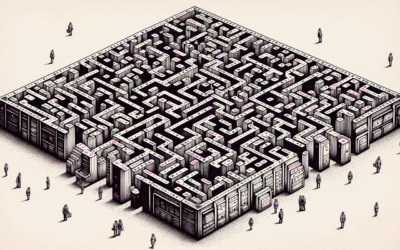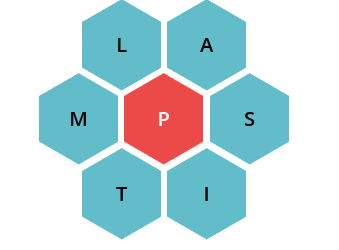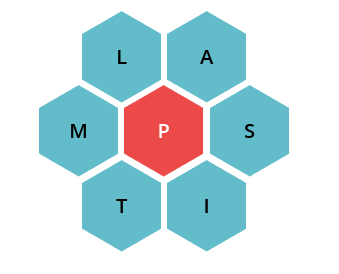
Hellstar: The Epitome of Cosmic Conflict and Heroism
In the vast and often mysterious realm of science fiction, few narratives capture the imagination quite like Hellstar. This universe is not merely a backdrop for tales of adventure; it serves as a rich tapestry woven with intricate themes of heroism, sacrifice, and the eternal struggle between good and evil. Hellstar presents a universe where cosmic forces clash and where the fate of civilizations hangs in the balance. Its narrative transcends traditional storytelling, delving deep into the human condition, exploring our strengths, weaknesses, and the choices we make in the face of insurmountable odds.
The Genesis of Hellstar: A Cosmic Creation
Hellstar was conceptualized in an era when the boundaries of science fiction were being pushed beyond the conventional. It emerged from the minds of visionary creators who sought to blend elements of traditional mythology with futuristic technology. The genesis of Hellstar is rooted in the exploration of humanity’s potential, highlighting the possibilities of advanced civilizations that have risen and fallen across the stars.
At its core, Hellstar is a metaphor for the human experience. Just as civilizations in the universe grapple with existential threats, so too do individuals in their personal lives. The narratives within Hellstar reflect our own battles against despair, our quests for identity, and our search for meaning in a seemingly chaotic cosmos. The universe is not merely a setting; it is a living entity that influences the lives of its inhabitants.
The Narrative Landscape: Worlds Beyond Imagination
Hellstar is characterized by its diverse array of planets, each with unique ecosystems, cultures, and challenges. From the fiery surfaces of Volkara, where molten lava flows beneath a crimson sky, to the icy expanse of Frigilus, where crystalline structures glisten like stars on the ground, each planet contributes to the richness of the Hellstar narrative.
Volkara: The Realm of Fire and Fury
Volkara is a planet that embodies chaos and intensity. Its inhabitants, known as the Vulcans, are resilient beings shaped by their environment. They have harnessed the energy of their planet, using it to forge powerful weapons and technologies. However, their fierce nature has led to conflicts with neighboring civilizations, culminating in battles that echo through the annals of history.
The lore of Volkara speaks to the struggle for survival in a hostile world. The Vulcans, driven by their fiery spirit, often find themselves at odds with their own destructive tendencies. This conflict is emblematic of the broader themes of Hellstar, where internal struggles mirror external conflicts. The Vulcans’ journey is a reflection of humanity’s own battles with passion and reason, illustrating the delicate balance between creation and destruction.
Frigilus: The Icy Enigma
In stark contrast to Volkara, Frigilus presents a world of stark beauty and chilling silence. Its inhabitants, the Frigidans, are masters of adaptation, having evolved to thrive in extreme conditions. Their society is built upon harmony with their environment, and their technology reflects a deep respect for the natural world.
The Frigidans represent the wisdom of restraint and the power of coexistence. Their narrative arc challenges the notion that strength is always associated with aggression. Instead, they show that resilience can also manifest as patience and understanding. In Hellstar, the interactions between the Vulcans and Frigidans serve as a microcosm for the larger struggles within the universe, showcasing the potential for cooperation amidst conflict.
Heroes of Hellstar: The Champions of Light
Central to the Hellstar Shirt saga are its heroes, each embodying unique traits and virtues that resonate with audiences. These characters are not merely warriors; they are individuals grappling with their own fears, aspirations, and moral dilemmas. Their journeys highlight the complexities of heroism, illustrating that true strength often lies in vulnerability and compassion.
Kaelan: The Reluctant Leader
One of the most compelling figures in Hellstar is Kaelan, a young warrior from Volkara who finds himself thrust into the role of a leader during a time of crisis. Initially hesitant to embrace his destiny, Kaelan’s character arc reflects the journey from self-doubt to self-acceptance. His struggles resonate deeply with those who have faced challenges in their own lives, making him a relatable and inspiring figure.
Kaelan’s journey is fraught with challenges that test his resolve and character. As he grapples with the expectations placed upon him, he learns the importance of unity and collaboration. His leadership style evolves from one of command to one of empathy, emphasizing the value of understanding and supporting others. In many ways, Kaelan’s story is a powerful reminder that leadership is not just about authority; it is about serving and uplifting those around us.
Lyra: The Guardian of the Stars
In stark contrast to Kaelan’s tumultuous journey is Lyra, a guardian figure representing hope and resilience. As a member of the Frigidans, Lyra possesses a profound connection to the cosmos, enabling her to navigate the intricate web of stars and celestial phenomena. Her wisdom and calm demeanor provide a counterbalance to the chaos of the universe, illustrating the importance of perspective and inner strength.
Lyra’s character embodies the theme of sacrifice, as she often puts the needs of others before her own. Her narrative arc serves as a poignant reminder that heroism is not always loud and flashy; it can be quiet, selfless, and deeply impactful. Through Lyra, Hellstar explores the idea that true strength often lies in the ability to endure and persevere, even in the face of overwhelming odds.
The Forces of Darkness: Villains in the Cosmos
In any narrative, the presence of antagonists is crucial for shaping the story. Hellstar presents a diverse array of villains, each representing different aspects of conflict and moral ambiguity. These characters challenge the heroes and force them to confront their fears, ultimately leading to growth and transformation.
Zarek: The Harbinger of Destruction
Zarek, a formidable antagonist from Volkara, epitomizes the destructive potential of unchecked ambition. Once a respected leader among his people, Zarek becomes consumed by his desire for power, leading to catastrophic consequences. His journey serves as a cautionary tale about the dangers of hubris and the moral compromises that come with the pursuit of greatness.
Zarek’s character is complex, illustrating the blurred lines between heroism and villainy. His motivations, while often selfish, stem from a desire to protect his people. This internal conflict adds depth to his character, making him more than just a one-dimensional villain. Zarek’s story prompts reflection on the nature of evil and the choices we make in our pursuit of power and recognition.
The Shadow Collective: The Enigma of the Void
A more abstract force of darkness in Hellstar is the Shadow Collective, a mysterious organization that thrives on chaos and discord. Their motives are shrouded in secrecy, and their actions often lead to devastating consequences for the inhabitants of the universe. The Collective symbolizes the darker aspects of human nature—the propensity for manipulation, deceit, and the exploitation of fear.
The presence of the Shadow Collective introduces themes of uncertainty and distrust, forcing characters to question their alliances and confront their vulnerabilities. This element of psychological conflict adds a layer of depth to the narrative, prompting readers to consider the complexities of morality and the gray areas that exist within every choice.
The Cosmic Battles: Epic Conflicts of Light and Dark
The essence of Hellstar lies in its epic battles—climactic confrontations that transcend mere physicality. These conflicts are not just about winning or losing; they serve as transformative experiences for the characters involved. The stakes are high, as the outcomes of these battles have far-reaching implications for the universe.
The Battle of Volkara: Fire Meets Ice
One of the most pivotal moments in the Hellstar saga is the Battle of Volkara, where the Vulcans and Frigidans find themselves embroiled in a conflict that threatens to consume their worlds. This battle is emblematic of the larger struggle between opposing forces—passion versus restraint, chaos versus harmony.
As the two civilizations clash, the battlefield becomes a crucible for transformation. Characters are pushed to their limits, forced to confront their beliefs and make difficult choices. Kaelan, in particular, emerges as a leader in this conflict, uniting the disparate factions in a bid for peace. This moment of convergence highlights the potential for understanding and cooperation, even in the face of deep-seated animosities.
The Final Confrontation: Light Against Darkness
The saga culminates in a breathtaking final confrontation between the heroes and the Shadow Collective. This climactic battle transcends the physical realm, delving into the metaphysical as characters grapple with their fears and insecurities. It is a test of will, where the very essence of hope and despair hangs in the balance.
During this confrontation, characters face their darkest selves, forcing them to reconcile their inner demons. The struggle against the Shadow Collective becomes a symbol of the broader human experience—the ongoing battle against self-doubt, fear, and the desire for acceptance. As the heroes unite in their quest for truth, they demonstrate that strength lies not only in individual power but in collective resilience.
Thematic Exploration: Beyond the Surface
While Hellstar presents a captivating narrative filled with adventure and conflict, its true strength lies in the thematic exploration woven throughout the story. From the complexities of heroism to the nature of sacrifice, the universe of Hellstar serves as a mirror reflecting our own struggles and triumphs.
The Duality of Existence: Light and Dark
At its core, Hellstar Hoodie grapples with the duality of existence—light and dark, creation and destruction. This theme permeates every aspect of the narrative, challenging characters to confront their beliefs and choices. The struggle between good and evil is not simply a battle of opposing forces; it is a reflection of the inner conflicts that reside within each individual.
Characters like Zarek and Kaelan embody this duality, illustrating that everyone possesses the capacity for both heroism and villainy. The choices made by each character reveal the complexities of morality, prompting readers to reflect on their own values and the impact of their decisions. This exploration of duality serves as a reminder that our actions define us, and that the lines between right and wrong are often blurred.
The Power of Unity: Together We Rise
Another prominent theme in Hellstar is the power of unity. Throughout the narrative, characters learn that true strength lies not in isolation but in collaboration. The conflicts between civilizations serve as catalysts for understanding, forcing characters to confront their prejudices and embrace the potential for cooperation.
This theme is exemplified in the relationships forged between characters from different planets. Kaelan and Lyra, despite their differences, come to understand the value of their unique perspectives. Their alliance becomes a symbol of hope, demonstrating that when individuals come together, they can overcome even the most insurmountable challenges.
The Legacy of Hellstar
As we journey through the universe of Hellstar, we are reminded of the timeless lessons embedded within its narrative. The struggles of its characters resonate deeply, reflecting our own battles against adversity and our quests for meaning in an ever-changing cosmos.
Hellstar transcends the boundaries of traditional science fiction, inviting us to explore the complexities of the human experience. Through its rich world-building, multifaceted characters, and profound themes, it offers a lens through which we can examine our own lives and choices.
In a world often filled with uncertainty, the legacy of Hellstar serves as a beacon of hope. It reminds us that even in the face of darkness, there exists the potential for light, unity, and redemption. As we look to the stars, we carry with us the lessons learned from this cosmic odyssey, forever inspired by the resilience of the human spirit.
With its intricate storytelling and profound explorations, Hellstar stands as a testament to the enduring power of narratives that challenge us to confront our own truths and embrace the infinite possibilities of the universe.
















